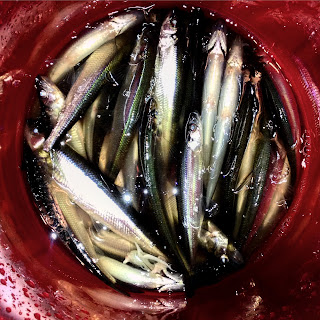Maine’s Striped Skunk
The striped skunk (Mephitis
mephitis) belongs to the family
Mephitidae (means stench). The skunk’s
range includes the continental United States, southern Canada and northern
Mexico. Highly adaptable, skunks can be found in a wide variety of habitats
from field and forests, agricultural and urban areas.
Skunks wear a coat of pitch black fur with a
distinctive broad white strip running down its back, making them uniquely easy
to identify. Despite this obvious and memorable warning many household pets
never seem to learn the “stay away” lesson, repeatedly finding skunks
irresistible.
About the size of a house cat, skunks weigh between
3-14 pounds and grow to a length of 25-32 inches. For their relatively
diminutive size, skunks possess an impressive defense system. Scent glands on
each side of the anus produce a foul smelling fluid, potent enough to ward off
almost any predatory attack. Direct contact with the fluid will cause severe skin
irritation and temporary blindness.
Skunks are neither diurnal (day) nor strictly nocturnal
(night) creatures but instead categorized as crepuscular or twilight creatures,
active most during dusk and dawn. Skunks encountered during daylight should be
avoided, since this uncharacteristic behavior is typical of skunks carrying
rabies.
Omnivores,
skunks eat a wildly variable diet of plants and animals, including insects,
birds, frogs, fruits, grasses, buds, grains, nuts, and carrion.
In residential areas, skunk’s burrowing and feeding habits frequently conflict
with humans, making them wildly undesirable pests.
Breeding occurs in February through
March with young born in April and June with litters averaging 6-7 young.
Wildlife Quiz Questions:
1. Is it legal to keep a skunk as a pet
in Maine?
2. How far can a skunk spray?
3. Is there a hunting season on skunks?
4. Do skunks hibernate?
5. If an animal is sprayed by a skunk
what is the best way to get rid of the odor?
6. What is the best way to get rid of a
skunk from a property?
7. What is the home rage of a skunk?
8. How long do skunks live?
Wildlife
Quiz Answers:
1. No, it is not legal to keep a skunk as
a pet in Maine.
2. A skunk can spray up to 15 feet.
3. Yes, skunks can be hunted from October
15th to December 31st.
4. Skunks are not “true” hibernators but
will den and go through long periods of inactivity during extremely cold
weather.
5. Many highly effective commercially
available products are available at pet stores. Home remedies include ingredients
such as tomato juice, vinegar, hydrogen peroxide and baking soda.
6. The best way to get rid of a skunk
from a property is to eliminate denning locations around houses and garages. If
this is not a viable option, skunks maybe live trapped and relocated a minimum
of 10 miles from the original location.
7. The home range of a skunk is 2 miles.
8. Skunks in the wild live about 3 years
while in captivity they have live 10-15 years.

